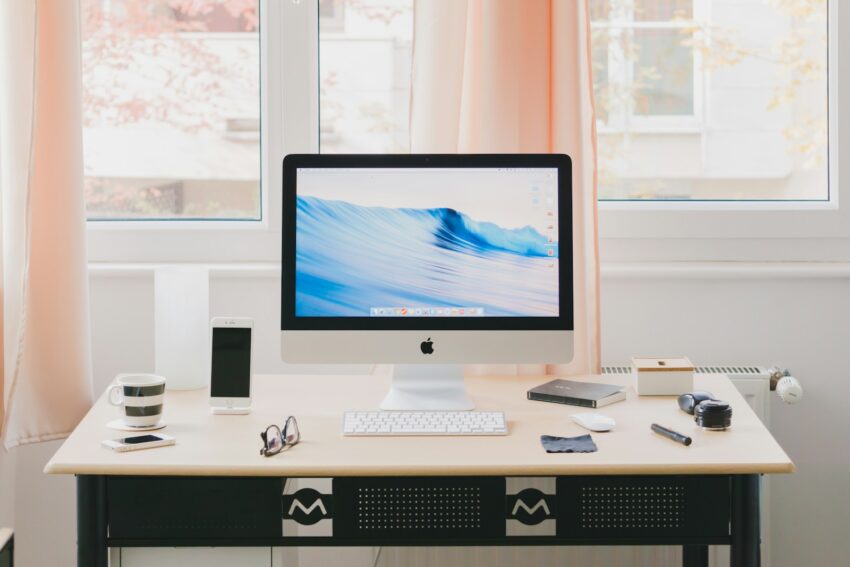As more students combine remote and on-campus learning, having an effective study space at home has become crucial. Whether you’re helping your college student set up their first dedicated workspace or upgrading an existing one, creating the perfect study environment requires thoughtful planning and smart financial decisions.

Understanding Your Student’s Needs
Every student has unique study habits and preferences. Before investing in a study space, observe how your student works best. Some thrive in complete silence, while others need background noise. Some prefer a minimalist desk, while others need space to spread out their materials.
Essential Elements of an Effective Study Space
A successful study area should include these key components:
- Ergonomic seating for proper posture
- Adequate desk space for computers and books
- Appropriate lighting (natural and artificial)
- Proper ventilation and temperature control
- Storage solutions for materials
- Power outlets and cord management
- Noise control measures
- Calendar or planning system
- Basic office supplies

Smart Financial Planning
Creating an ideal study space doesn’t have to strain your budget. Consider refinancing your student loan to free up funds for home improvements that support academic success. Many families find that consolidating or refinancing existing loans provides extra room in their monthly budget for important educational investments.
Location Matters
Choose a study space location that minimizes distractions while remaining accessible. Consider converting a spare room, sectioning off part of a bedroom, or transforming an underutilized dining area. The key is finding a space where your student can focus without feeling isolated.
Lighting Solutions
Proper lighting reduces eye strain and maintains alertness. Combine natural light with task lighting for optimal results. Position the desk to take advantage of natural light while avoiding glare on computer screens. Add adjustable desk lamps for focused work during evening hours.

Technology Integration
Today’s students need reliable technology. Ensure the space has:
- Strong Wi-Fi connectivity
- Sufficient electrical outlets
- Proper computer setup
- Charging stations
- Printer access
- Video conferencing capabilities
- External monitor options
Organization Systems
Help your student stay organized with a combination of physical and digital storage solutions. Consider vertical storage to maximize space, and implement a filing system for important documents. Many students find that creating a personally made digital scrapbook for class notes and project materials helps them stay organized while reducing paper clutter.
Comfort and Inspiration
While functionality is crucial, don’t forget about personal touches that make the space inviting. Add inspirational quotes, artwork, or photos that motivate without distracting. Consider plants for improved air quality and aesthetic appeal.
Budget-Friendly Solutions
Creating an effective study space doesn’t require expensive furniture. Look for quality used items, repurpose existing furniture, or choose modular pieces that can adapt to changing needs. If you’ve refinanced your student loan, consider using the savings for key pieces that directly impact study effectiveness, like a good chair or proper lighting.
Maintaining Order
Establish a cleaning and organization routine to keep the space functional. Regular maintenance prevents clutter from accumulating and helps maintain a productive atmosphere. This is especially important when using a personally made digital scrapbook system – set aside time each week for digital organization.
Adaptability
Design the space to evolve with your student’s needs. As courses change each semester, storage and organization requirements may shift. Choose furniture and storage solutions that can adapt to different subjects and study styles.
Time Management Tools
Incorporate tools that help with time management. Whether it’s a traditional wall calendar or a digital planning system, having visual reminders of deadlines and commitments helps students stay on track.
Healthy Study Habits
Remember to include elements that promote health and well-being. Consider a standing desk option, ensure proper ventilation, and encourage regular breaks. These factors contribute to better focus and retention during study sessions.
Financial Considerations
While creating the perfect study space is important, it’s equally crucial to maintain financial stability. If education expenses are straining your budget, explore options to refinance student loan debt. The money saved through refinancing can be redirected toward creating an optimal learning environment.
Conclusion: Investing in Success
Creating an effective study space is an investment in your student’s academic success. By thoughtfully planning the space, incorporating both physical and digital organization tools like a personally made digital scrapbook, and making smart financial decisions such as exploring options to refinance student loan debt, you can create an environment that supports learning without causing financial stress.
Remember, the goal is to create a space where your student can focus, learn, and succeed. Whether they’re attending virtual lectures, completing assignments, or preparing for exams, a well-designed study space provides the foundation they need to achieve their academic goals. Take time to plan, implement, and adjust the space based on your student’s needs, and watch them thrive in their personalized learning environment.
